This post has not been edited by the GamesBeat staff. Opinions by GamesBeat community writers do not necessarily reflect those of the staff.
June 7th is right around the corner, and for those of us in the gaming community it only means one thing: E3 is coming, and coming soon! While most people anxiously await Christmas or New Years, gamers around the world pine for early summer when the top brass in the gaming universe gather in Los Angeles to present their wares for the industry to ogle at.
 |
| It's like Christmas, Thanksgiving and Halloween all rolled into one! |
Each year the big guys–Nintendo, Sony and Microsoft–gather in separate rooms and wow crowds with stunning displays of one-ups-manship, each showing off even more stellar previews and gameplay trailers than the last.
Last year at E3 the words on everybody's lips were "motion gaming", with Sony and Microsoft each showing off what they believed to be revolutionary to the trend – the Move and Kinect respectively. Meanwhile, Nintendo was sitting off in the corner and actually showing off something that proved they were yet again a few years ahead of the curve (as per usual): glasses-free 3D.
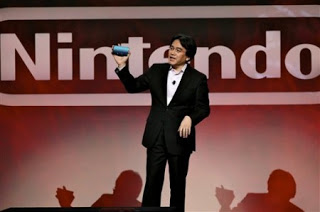 |
| C'mon Iwata, you know the drill–3D pics, or it didn't happen. |
But it has been almost a year (10 months to be precise) since Sony's PlayStation Move hit the market, and 8 months since Microsoft's Kinect joined them on the sales floor, and there hasn't been too much excitement overall for the supposedly game-changing devices. Yes the Kinect has sold over 10 million copies as of March of 2011, and the Move is only trailing by a couple of million as of April at roughly 8 million units sold, but will the trend stay strong or should we look to see something even bigger and better at E3 2011 while our Kinects and Moves gather dust?
PlayStation Move
When the Move was announced, there was a lot of fanfare from the Sony-side of things, but elsewhere things were skeptically quiet.
"It's just another Wii," said some. "What's with the crazy colored-ball on the end?" others questioned.
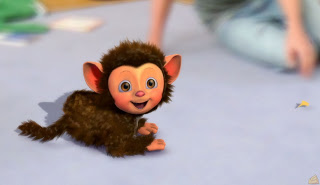 |
| "Uh, what?" The rest of us were left wondering. |
Questions aside, Sony assured everyone that the Move really was the next step forward for gaming, and the critics agreed. After its release, sources ranging from Game Informer to IGN all gave the Move enthusiastic reviews with an 8 out of 10 and an 8.5 out of 10, respectively. Even The Guardian chimed in saying it would be, "very hard to go back to the relative inaccuracy of the Wii."
However the point that mattered most upon announcement of the Move was not the faith that critics put into it, but the faith that developers had in it as well. The launch of the Move was bolstered by a list teeming with well-known third-party developers promising to make more than just the typical motion party games that the Wii was known for.
If there was anything Sony learned from the disaster that was the PS2's EyeToy, it was that in order for a peripheral to be successful, it would need the support of more than just their in-house game studio. Luckily for them, companies like Capcom, EA, HudsonSoft, Sega, THQ and Ubisoft were happy to oblige.
When it came time for these companies to follow through on their word, suddenly the picture seemed to change. What looked like full-backing not so long before became no more than patches to old titles, with most new Move titles being the party and dance games everyone was initially concerned about. While there were some strong efforts made for games like SOCOM 4, Little Big Planet 2, Tiger Woods PGA Golf and Killzone 3, the release list to date is mostly populated by exercise engines (Zumba Fitness and Get Fit with Mel B), dance games (DDR, etc) and generic suites that showcased the peripheral's abilities (PlayStation Move Heroes).
 |
| Do 100 sit ups, or "I'll Tell Ya What I (Really Really) Want" again. |
Now we are almost at E3 2011, a year after the big announcement and 10 months after the Move hit shelves, and it is not looking like PlayStation is focusing too much on their motion peripheral. Instead it looks like they are going back to the tried-and-true model of announcing the hit titles and systems they have lined up.
According to sources at IGN, if you're looking forward to news on the PlayStation Vita (the rumored code name for the next Playstation portable) or the next installment in Nathan Drake's Uncharted adventures, then you're in luck. Also, if you're a fan of Kevin Butler (and come on, who isn't?) there may be a chance we'll see more of him this year.
Move fanatics? You might not want to hold your breath.
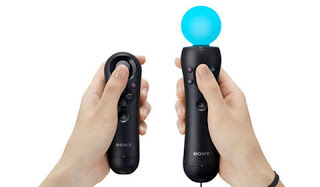 |
| Otherwise this won't be the only thing turning blue come next week. |
Microsoft Kinect
Now if it was fanfare you were looking for when it came to motion gaming, Microsoft was where to get it.
Announced originally at E3 2009, the possibilities of the Kinect seemed endless. The original concept video showed a device capable of creating motion-based gaming without the need for any goofy wand-shaped controllers. It also showed people scanning their real life skateboard designs into Tony Hawk games, people trying on clothes virtually from the Internet via video chat with their friends and people logging into Xbox live using only the Kinect's facial recognition. I'll leave it up to you to determine which of these capabilities actually made it to release day.
 |
| Now logging in user: FabledLiar360 |
Regardless of promises kept or broken, there was no denying upon its release that the Kinect had changed motion gaming forever. Critics worldwide recognized its incredible capabilities, but offered, in some cases, lower scores than those given to the Move due to a lack of serious games being promised in the future. IGN, giving the peripheral a 7.5 out of 10, found the device to be fun and quirky for casual gamers, but certainly not worth its $149.99 price tag, especially when a mere $50 more could buy an "entry-level" Xbox 360.
Inevitably, the word "casual" would come to define the Kinect, despite the efforts of its PR team to convince us otherwise.
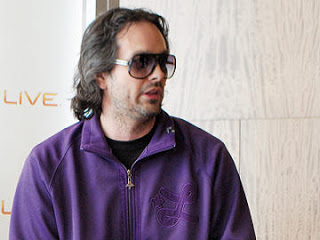 |
| The only thing casual about Kinect-rep Kudo Tsunoda is his fashion sense |
Being one of the surprisingly few people who turned out at midnight in Cleveland to pick up this device, I am not ashamed to admit that I was excited and amazed by the Kinect for about the first two weeks after its release.
Coming packaged with Kinect Adventures and having purchased Dance Central to go along with it, I found myself having fun and sweating up a storm all at the same time. However, the seamlessness of controller-less gameplay didn't come without some kinks in tow.
The need for a full 6-feet of play space makes the average college gamer a bit out of luck in both dorm rooms and small apartments alike. While the device will respond to space that is slightly less than 6-feet, the play becomes hectic and jumpy the smaller the space gets.
It's been just over 8 months since the device's initial release, and unlike the Move, the library of games out for the Kinect are severely lackluster. To date, a number of highly anticipated titles like Gears of War Exile, Forza Motorspot 4 and MGS: Rising have been announced with Kinect support, but without release dates, leaving the current list of games over-populated with exercise engines, dance engines and an unnecessary amount of party games from several developers.
It is hard to blame the developers though. The Kinect had so much untested potential that to come out and clearly back the device was a risky move. The PlayStation Move was building on already proven Wii-based technology, but the Kinect was entering unprecedented waters…and no amount of verbal reassurance was going to assuage those fears.
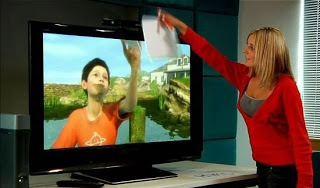 |
| Yeah, Milo turned out to be a lie–but you'd be lying if you said he didn't freak you out a little too. |
While the slowly incorporated recent additions of voice controls for Hulu Plus! and Netflix and the rumored incorporation of Skype into Video Kinect certainly help to create the futuristic Star Trek-style feel to controller-free gaming, if the Kinect can't measure up with some serious brass on its release list, then it too risks falling into obscurity.
However, this is where the key difference between Sony and Microsoft become apparent.
In looking at what IGN believes Microsoft has planned for their E3 2011 press conference, a search for the phrase "Kinect" brings up 7 entries, one of which is an entire section devoted to Microsoft discussing the upcoming plans and release titles they have for Kinect for the next gaming year. Clearly they are much more devoted to making their movement peripheral stand the test of time and (outside of my clear excitement for Gears of War 3 and the rumored Halo: Combat Evolved HD remake) I think that they may just have what it takes to maintain the lead they currently have over Sony and the Move.
While we all know talk is cheap, and that Microsoft did a LOT of talking at E3 last year about the Kinect's potential, let's hope that this year, after seeing the device break sales records, that the developers are at the ready and that Kinect users are in for a year like none other.
Nintendo
So, with all this movement talk, where does the forefather of most gaming revolutions–Nintendo–and the Wii stand on the matter?
Well unless you missed last year's E3 conference and have been living under a rock, than you are probably already familiar with their newest handheld device, the Nintendo 3DS, and the recently announced new console–better known as Project Cafe.
While Sony and Microsoft were grasping at the end-straws of the motion-gaming phenomenon that the Wii started back in 2006, Nintendo was already grasping at Sony's heels–pulling their only ace-in-the-hole into Mario's denim pocket. While Sony was busy touting their in-home system's capability to play in 3D, Nintendo was busy showing off their handheld 3D gaming unit that you didn't even need glasses to play with.
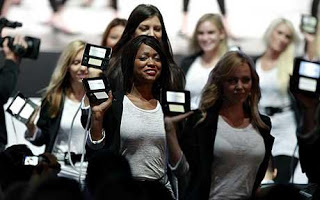 |
| Models chained to the devices not included |
Now this year, as Sony seemingly scraps its movement tech, and Microsoft bolsters theirs to ensure longevity in its current console, Nintendo is yet again venturing into the uncharted and starting what will inevitably turn into the next console war/generation–despite Sony and Microsoft swearing to the contrary.
It looks as though Nintendo is done with motion gaming for now, and is instead taking its concept of dual-screen gameplay from handheld into console-based gaming. The rumors, as they currently stand, show a controller design that incorporates a small LCD display into the Project Cafe controller unit. Beyond that, the rest of Project Cafe is a mystery, at least for the next few days that is. At E3, expect to see Project Cafe revealed and demo units on the floor for user testing.
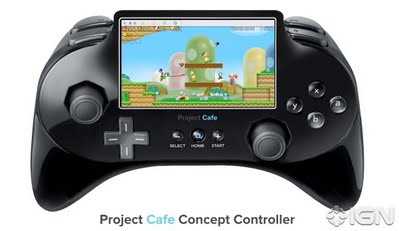 |
So, What Does This Mean…?
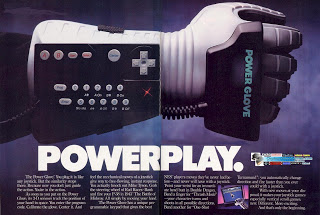 |
| I'd rather not know what these are being use for nowadays. |
Justin Brenis is Co-Founder and Editor at Pixel Perfect. You can find them online at www.pixelperfectmag.com or on Twitter @ThePixelPerfect. Check them our for the latest is video game news, previews, reviews and much more!
